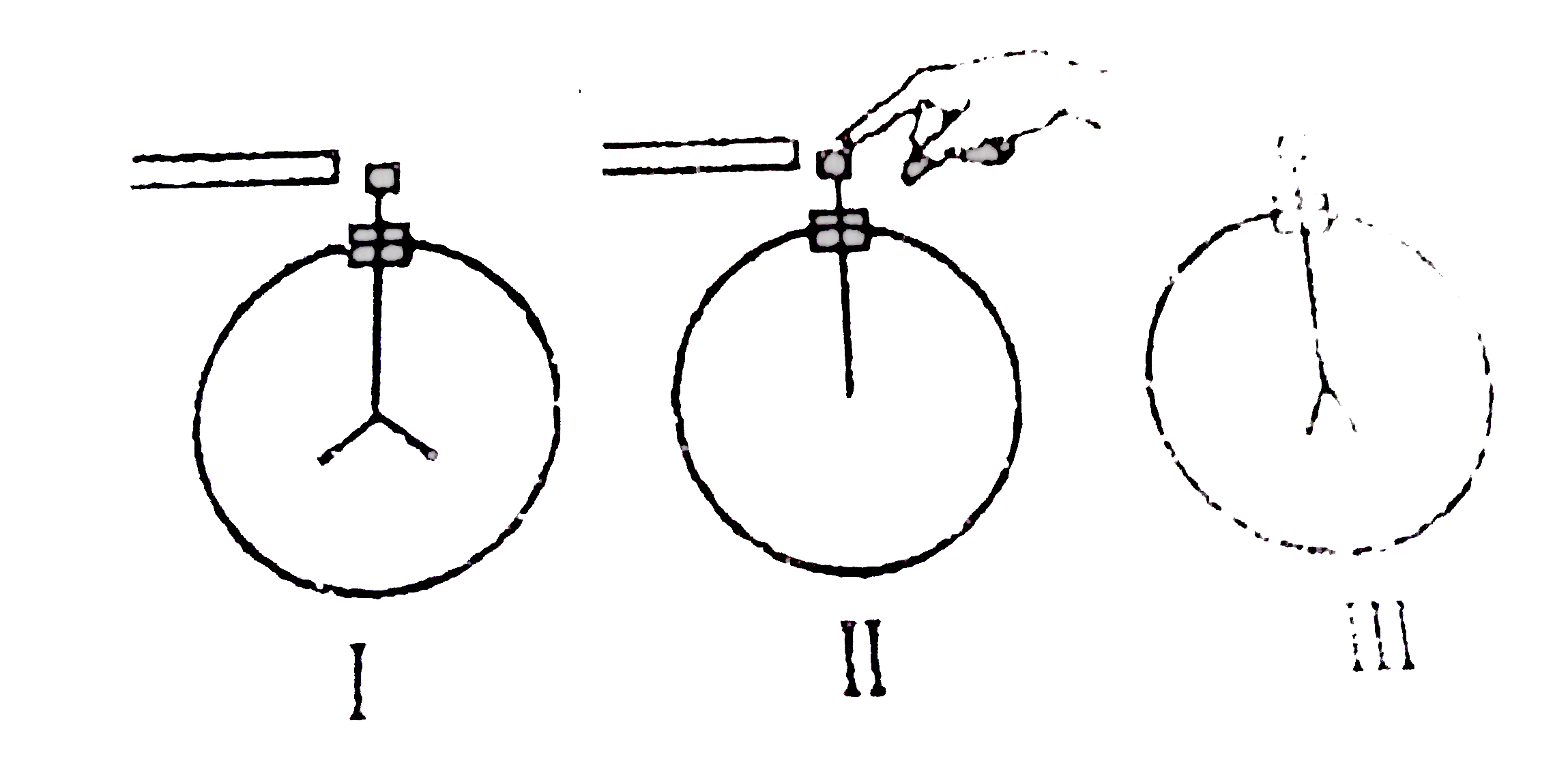If a charged ebonite rod is made to touch the disc of a gold-leaf electroscope, the leaves diverge. Then the rod is removed from the disc and it is found that the diver gence of the leaves decreases a little-explain.
Suppose, the ebonite rod is charged positively. Ebonite is a non-conductor of electricity. So when the rod touches the disc of a gold-leaf electroscope, the charges of both of them existing at the place of contact spread on the disc and the leaves of the electroscope. So the leaves spread apart.
Now the charges on the other parts of the ebonite rod do not move to the electroscope. So these charges induce negative charge on the disc and positive charge on the leaves. For this reason, divergence of the leaves increases further.
Divergence of the leaves depends on both of induction and con induction of charges. When the ebonite rod is removed, induction will be absent. So then the leaves will have positive charges due to conduction only. So, divergence of the leaves decreases a little.
Topper's Solved these Questions
- ELEMENTARY PHENOMENA OF ELECTROSTATICS BOOK - CHHAYA PUBLICATIONCHAPTER - ELEMENTARY PHENOMENA OF ELECTROSTATICS EXERCISE - NCERT TEXTBOOK QUESTIONS
5 Videos
- ELEMENTARY PHENOMENA OF ELECTROSTATICS BOOK - CHHAYA PUBLICATIONCHAPTER - ELEMENTARY PHENOMENA OF ELECTROSTATICS EXERCISE - EXERCISE
69 Videos
- ELEMENTARY PHENOMENA OF ELECTROSTATICS BOOK - CHHAYA PUBLICATIONCHAPTER - ELEMENTARY PHENOMENA OF ELECTROSTATICS EXERCISE - SECTION RELATED QUESTIONS
27 Videos
- ELECTROMAGNETISM BOOK - CHHAYA PUBLICATIONCHAPTER - ELECTROMAGNETISM EXERCISE - CBSE SCANNER
26 Videos
- KIRCHHOFF'S LAWS AND ELECTRICAL MEASUREMENT BOOK - CHHAYA PUBLICATIONCHAPTER - KIRCHHOFF'S LAWS AND ELECTRICAL MEASUREMENT EXERCISE - CBSE SCANNER
16 Videos
Similar Questions
A negatively charged rod is held close to the disc of a neutral gold leaf electroscope. What kind of charge is produced on the
disc
gold leaves ?
View SolutionWhen a negatively charged ebonite rod is brought close to an uncharged electroscope, the leaves of the electroscope develop positive charge and diverge.
View Solution
Knowledge Check
The rod or stem of a gold leaf electroscope is made of
AwoodBbrassCglassDeboniteWhich of these parts of a gold-leaf electroscope provides insulation to the gold leaves from external disturbances?
ABrass discBBrass rodCGlass jarDTin foilsWhen an object is touched with the metal top of an electroscope, its aluminium leaves diverge. What conclusion do you get from this observation ?
AThe object is chargedBThe object is unchargedCThe objects is an insulatorDNone of these
If a body touching the disc of an uncharged gold leaf electroscope makes its leaves .................. we can say that body is charged.
View SolutionA glass rod rubbed with silk is used to charge a gold leaf electroscope and the leaves are observed to diverge. The electroscope thus charged is exposed to X-rays for a short period. Then
View SolutionA glass rod rubbed with silk is used to charge a gold leaf electroscope and the leaves are observed to diverge. The electroscope thus charged is exposed to X-rays for a short period. Then
View SolutionA glass rod rubbed with silk is used to charge a gold leaf electroscope and the leaves are observed to diverge. The electroscope thus charged is exposed to X-rays for a short period. Then
View SolutionWhen a negative charged rod is brought near, but does not touch, the initially unchanged electroscope shown below, the leaves spring apart (I). When the electroscope is then touched with a finger, the leaves collapse (II). When next the finger and finally the rod are removed, the leaves spring apart a second time (III). The charge on the leaves is

View Solution
